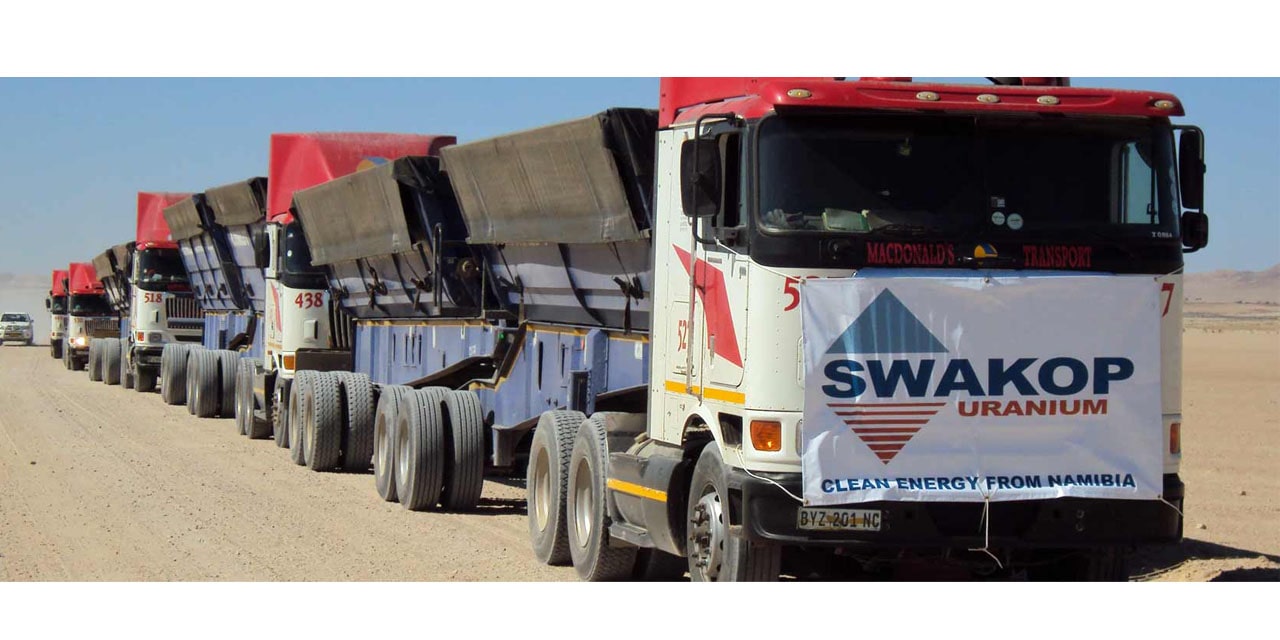CHAMWE KAIRA
The planned establishment of a Russian owned uranium mine in the Omaheke Region could further propel Namibia to grow its contribution to the world’s uranium output.
Russia’s Uranium One Group aims to invest up to N$8,5 billion in the Namibian economy. The money will not be raised on the local market.
“Uranium One is a state-owned company of Rosatom, thus as a state-owned company it will not be necessary to raise the funds as is the case in a private enterprise,” the company said in response to questions from the Windhoek Observer. The company said the money to fund the project will come from Uranium One itself or Rosatom, its mother company.
The investment by Uranium One Group comes at a time when the West has imposed sanctions on Russia following its invasion of Ukraine. The company maintains that the sanctions will have minimal or no impact on its project in Namibia. Mining is planned for 2029 with a lifespan of 25 years, the company said.
Uranium One Group has come under criticism regarding the issue of drilling and its impact on the Stampriet aquifer from various stakeholders. But the company denies these allegations.
“The exploration drilling is of a very small diameter and has no impact whatsoever. The Ministry of Mines and Energy and the Ministry of Environment, Forestry and Tourism has done their due diligence and has renewed four Exclusive Prospecting Licences (EPLs) and four Environmental Clearance Certificates (ECCs),” the company said.
The company’s projection is that the mine will produce about 3 000 tons of uranium per annum. In total it will increase Namibia’s GDP between 2 percent to 3 percent. Namibia’s uranium mines are Rössing Uranium, Swakop Uranium, and Langer Heinrich which is on care and maintenance.
Paladin owns Langer Heinrich with 75 percent controlling interest in Langer Heinrich Uranium (LHU) with 25 percent owned by China National Nuclear Corporation (CNNC) Overseas Uranium Holding Limited, a wholly owned subsidiary of CNNC.
Due to sustained low uranium prices, Langer Heinrich Mine (LHM) was placed in care and maintenance in August 2018. The mine is expected to remain in care and maintenance until the uranium spot price makes it economical to restart the facility on a sustainable basis but has indicated 2024 as a possible restart year, because of a strong uranium market.
Rössing produced 2 882 tons of uranium oxide in 2021 exceeding its target of 2,757 tons. The excellent production mitigated the stronger than anticipated exchange rate and the unit cost impact.
Rössing Uranium, which is majority owned by China National Uranium Corporation Limited (CNUC) is the country’s longest running open pit uranium mine which has been in operation for over 40 years. Rössing produces uranium oxide for nuclear power utilities in countries which are signatories to the Nuclear Non-Proliferation Treaty.
Swakop Uranium represents a partnership between the Republic of Namibia, represented by Epangelo Mining Company and China General Nuclear of the People’s Republic of China. The company’s Husab uranium mine, located near Swakopmund, is one of the largest uranium mines in the world and produced 3902 tons of oxide in 2021.
Based on 2021 production figures, Namibia could well produce over 10 000 tons of uranium per annum when Uranium One Group comes into production.
The Bank of Namibia said in its 2021 Annual Report that the rise in uranium production in 2021 was ascribed to low base effects because of water supply constraints experienced in 2020 emanating from a high sulphur content in the ocean, which slowed down the water purification process at the desalination plant.
The spot price of uranium rose by 17.7 percent to an average of US$35.28 per pound during the year under review, mainly owing to improved global demand for nuclear fuel as countries look towards reducing carbon emissions, according to the central bank.
World Nuclear Association figures showed that in 2021 about two-thirds of the world’s production of uranium came from mines in Kazakhstan, Canada and Australia. In 2021 Kazakhstan produced the largest share of uranium, followed by Namibia and Canada. The top ten uranium producers are Kazakhstan (21 819 tons), Australia (4192 tons), Namibia (5753 tons), Canada (4693 tons), Uzbekistan 3500 (tons), Niger, (2248 tons), Russia (2635 tons), Ukraine (1885 tons), India (615 tons) and South Africa (385 tons).




